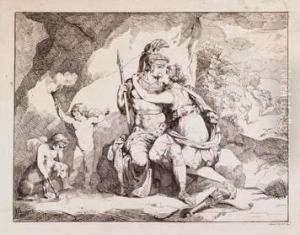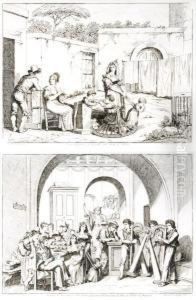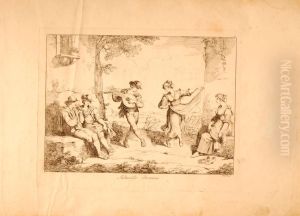Bartolomeo Pinelli Romano Paintings
Bartolomeo Pinelli Romano, born in Rome on November 20, 1781, was an Italian artist renowned for his engravings, drawings, and paintings that vividly captured the life, customs, and history of Rome and its people during the early 19th century. He was deeply influenced by the cultural and social milieu of his city, which served as an inexhaustible source of inspiration throughout his career. Pinelli's works are particularly valued for their historical accuracy and their ability to convey the spirit of Roman life, making him a key figure in the Italian art scene of his time.
Pinelli's artistic journey began under the guidance of his father, who was a modest craftsman, and he further honed his skills at the Accademia di San Luca in Rome. His talent for drawing and engraving was evident early on, and he quickly gained recognition for his detailed and dynamic representations of Roman folklore, traditions, and historical scenes. Unlike many of his contemporaries who focused on the grandeur of classical and Renaissance Rome, Pinelli dedicated himself to depicting the everyday lives of common Romans, from peasants to bandits, with a fascination for the costumes, celebrations, and customs that defined Roman culture.
Throughout his career, Pinelli produced a significant body of work, including a series of plates illustrating Roman costumes, scenes from Italian history, and episodes from classical literature, notably the Iliad and the Odyssey. His engravings, characterized by their lively compositions and meticulous attention to detail, were highly sought after by collectors and contributed greatly to the romanticized image of Rome that prevailed in the 19th century. His work not only served as a document of his time but also inspired a sense of nostalgia and pride in Italian heritage.
Bartolomeo Pinelli Romano died in Rome on April 1, 1835. His legacy endures through his contributions to the visual documentation of Italian culture and history, and his works remain a valuable resource for understanding the social fabric of Rome in the early 19th century. Pinelli's artistic vision continues to be celebrated for its authenticity, vibrancy, and enduring appeal, securing his place in the annals of Italian art history.



